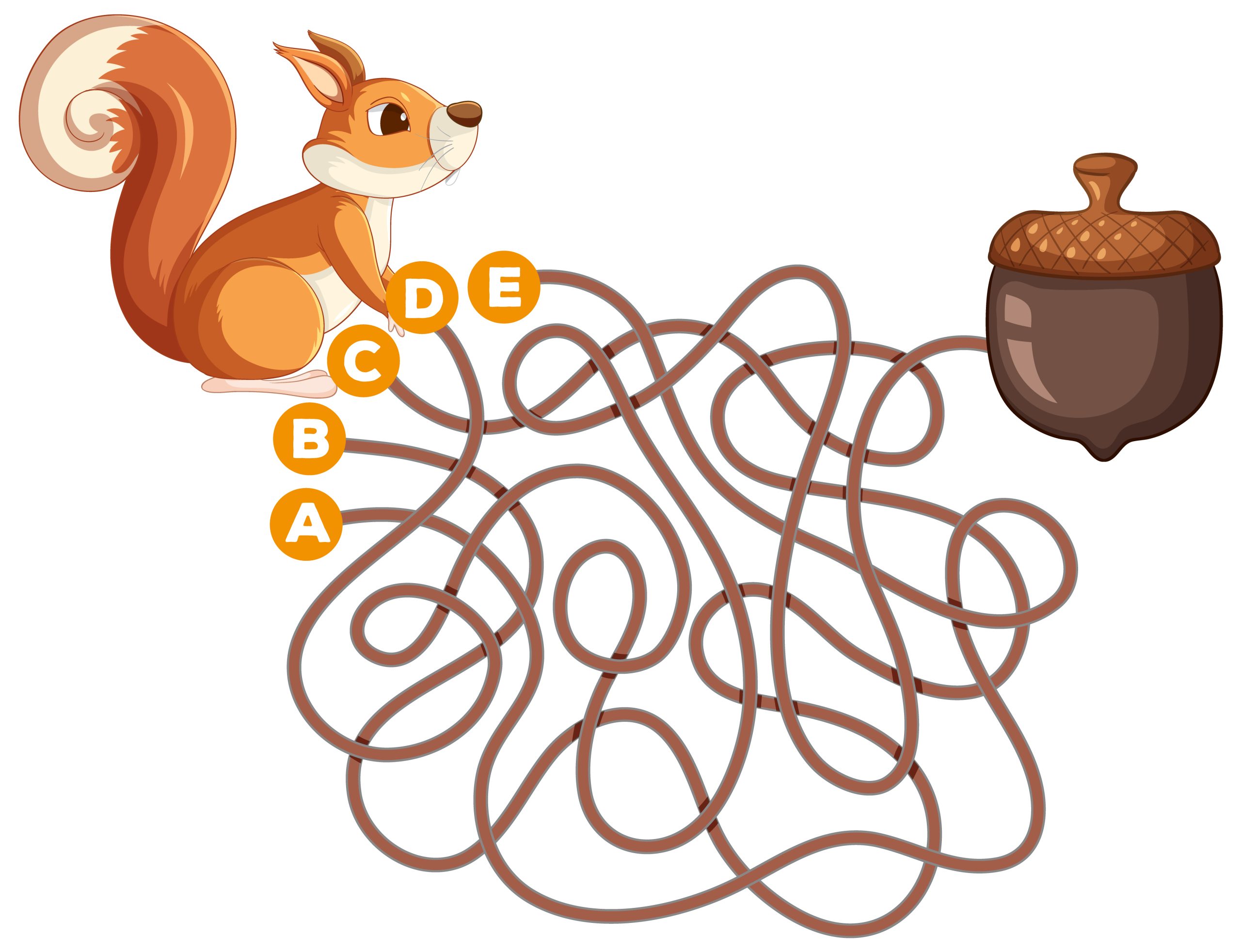As the leaves begin to change color and the air becomes crisp, it’s the perfect time to engage your young ones in a playful challenge. Imagine their eyes lighting up with excitement as they try to unravel the mysteries of fall through thought-provoking riddles. These ‘What Am I’ fall riddles for kids are like little enigmas, waiting to be solved. From objects that fall but never break to apples that multiply in an intriguing way, these riddles will not only entertain but also sharpen their minds. So, why not embark on this journey of discovery and unravel the secrets of autumn together?
Three Apples Taken: How Many Do You Have?
Did you know that if you take three apples, you would only have two left? It may sound puzzling, but it’s a fun riddle that challenges your math skills! Fall riddles like this one can be a creative and engaging way to incorporate learning into the classroom. By presenting riddles with a fall theme, such as apples, leaves, or pumpkins, children can have fun while also improving their critical thinking skills.
One way to make learning with fall riddles even more exciting is by organizing a riddle scavenger hunt. Hide riddle cards around the classroom or outdoor area, and have the children search for them. Each riddle they solve will lead them to the next clue, creating a fun and interactive learning experience.
Using riddles as a tool for developing language and vocabulary is another great benefit. Riddles often use wordplay and clever language, which can help children expand their vocabulary and improve their understanding of different linguistic concepts.
Lastly, the benefits of laughter and humor cannot be overlooked. When children engage with fall riddles, they are likely to find them funny and amusing. Laughter and humor have been shown to have positive effects on children’s mental and emotional well-being, promoting happiness and reducing stress.
Pine Tree Leaves Falling: Needles, Not Leaves
When you see pine tree leaves falling, you might be surprised to learn that pine trees actually have needles instead of leaves. It’s like they’re playing a sneaky riddle with Mother Nature! But why do pine trees have needles instead of leaves? Well, needles are actually better suited for the harsh winter weather. They are thin and waxy, which helps them retain moisture and protect the tree from freezing temperatures. Plus, their shape helps them shed snow easily, preventing heavy snowfall from weighing down the branches and causing damage.
Speaking of things that fall but never break, have you ever seen a snowflake? They delicately float down from the sky, landing softly on the ground, and yet they never shatter. It’s like they have their own magical protection spell! Another example is a feather. It gently drifts from the sky, gracefully twirling and fluttering, but it never breaks when it reaches the ground.
Now, let’s think about riddles that ask but never answer. Have you heard the riddle, “What has keys but can’t open locks?” It’s a piano! The keys on a piano can make beautiful music, but they can’t actually open anything. It’s a clever riddle that keeps you guessing.
And what about objects that have a tail and a head, but no body? Well, a coin fits that description perfectly! It has a head on one side, usually with a picture or symbol, and a tail on the other side, usually with a number or another design. But there’s no body to be found! It’s a funny little quirk of coins.
Now, let’s solve the mystery of how a sneeze can travel at nearly 100 mph without leaving the room. When you sneeze, the air rushes out of your nose and mouth with a lot of force. It’s like a mini explosion! This burst of air carries tiny droplets from your nose and mouth, and those droplets can travel at high speeds, even though they’re not physically leaving the room. It’s like a superpowered sneeze jet! So next time you sneeze, remember that you’re launching a speedy air projectile. Gesundheit!
Tall When Young, Short When Old: a Candle
As you light a candle, you’ll notice that it stands tall when it’s young and its flame dances in the air, but as it burns down, it becomes shorter, reminding us that even the brightest things in life can diminish over time. Candles are not only a source of light, but they can also add a touch of warmth and coziness to fall festivities. You can get creative with candles by using them to decorate pumpkins, creating a spooky ambiance for Halloween, or setting a serene atmosphere for Thanksgiving dinner.
While candles may remind us of the changing seasons, it’s also interesting to explore the different types of trees and their unique characteristics. From the towering oak tree to the delicate cherry blossom tree, each tree has its own story to tell. Engage children in a discussion about the functions of trees and how they contribute to our environment.
Reflecting on the beauty of nightfall is another way to appreciate the changing seasons. As the sun sets and darkness falls, the world takes on a different kind of magic. Encourage children to observe the night sky, identify constellations, and appreciate the quiet stillness of the night.
Lastly, riddles that challenge perception and logic can be a fun way to engage children in critical thinking. The riddle of the candle, for example, challenges us to think about how things can change over time. By encouraging children to think outside the box, we can help them develop their problem-solving skills and creativity.
Bus Driver’s Eye Color: Same as Yours
Imagine you’re riding on a bus, and the bus driver turns to you and says, “Guess what? My eye color is the same as yours!” You look at the bus driver in surprise, trying to process what they just said. You glance at your own eyes, wondering what significance your eye color could have. Eye colors are fascinating, and they vary among different individuals and cultures. In some cultures, certain eye colors are considered lucky or unlucky, while in others they may symbolize certain traits or characteristics.
As the bus driver continues to drive, you realize how important their role is in ensuring the safety of all the passengers. They navigate through traffic, follow road rules, and make sure everyone reaches their destination safely. Just like the unique characteristics of pine trees, bus drivers must adapt to different climates and road conditions to provide a smooth and secure journey.
While pondering the significance of eye colors, you also think about the symbolism of candles in various cultures and traditions. Candles often represent light, hope, and warmth. They are used in ceremonies, celebrations, and rituals, bringing people together and creating a sense of ambiance.
Time is another concept that comes to mind. It can be represented in different forms, such as clocks, calendars, or even the changing seasons. Just like the fall season brings its own unique riddles and jokes, time brings opportunities for growth, change, and new experiences.
In the midst of your thoughts, the bus driver announces your stop. You thank them and step off the bus, still intrigued by the connection they made between your eye color and theirs. It was a brief moment of curiosity and wonder, reminding you that sometimes the most unexpected connections can bring a touch of magic to everyday life.
What Falls but Never Breaks: Nightfall
Nightfall, like a gentle whisper, descends upon the world, bringing with it a sense of calm and mystery. As the sun sets and darkness fills the sky, the beauty of nightfall captivates both young and old. But have you ever wondered what falls but never breaks? It’s nightfall itself! The transition from day to night is a magical moment that happens every day, and it never fails to amaze us.
Riddles and jokes, especially those with a fall theme, are not only entertaining but also beneficial for kids. They enhance brain activity and problem-solving skills, promote laughter and happiness, boost creativity and imagination, improve memory and cognitive abilities, and encourage social interaction and bonding. So why not indulge in some silly fall jokes and riddles?
Here’s one for you: What do you use to mend a jack-o-lantern? A pumpkin patch! And how about this one: Who won the skeleton beauty contest? No body! These fall-themed jokes and riddles are sure to bring a smile to your face and make you giggle.
If you’re looking for more fall-themed humor, there are plenty of additional resources available. You can find a variety of jokes and riddles for kids online, or you can explore back-to-school activities or fall activities for more entertainment ideas. So go ahead, embrace the laughter and joy that fall-themed jokes and riddles bring, and let the silliness of the season fill your days with happiness.
Riddle That Asks but Never Answers: an Owl
Have you ever encountered a riddle that asks a question but never seems to provide an answer? Well, let me introduce you to the mysterious world of owls! Owls have long been associated with wisdom and knowledge in different cultures around the world. In Greek mythology, the goddess Athena was often depicted with an owl on her shoulder, symbolizing her wisdom. In Native American folklore, owls were believed to be messengers from the spirit world, bringing important messages to the people.
But owls are not just symbols, they are fascinating creatures in their own right. Did you know that there are over 200 different species of owls? And they come in all shapes and sizes, from the tiny Elf Owl, which is about the size of a sparrow, to the majestic Eurasian Eagle Owl, which has a wingspan of up to six feet!
Owls are also known for their incredible hunting abilities. Their sharp talons and keen eyesight make them expert hunters, able to swoop down silently on their prey. And did you know that owls can rotate their heads almost 270 degrees? This allows them to scan their surroundings for any signs of danger or food.
A Tail and a Head, but No Body: a Coin
A coin is a small, round object that has a tail and a head, but no body. It may seem like a simple piece of currency, but there’s more to it than meets the eye. Let’s explore the fascinating world of coins!
- The symbolism of coins in different cultures: Coins have been used as symbols of wealth, luck, and power in various cultures throughout history. They often feature intricate designs and engravings that represent the values and beliefs of the society.
- The history and origins of pine trees: Pine trees are evergreen trees that have been around for millions of years. They have a rich history and have been used for various purposes, such as building materials, medicine, and even as a symbol of life and longevity.
- Exploring different types of candles and their uses: Candles come in all shapes, sizes, and scents. They have been used for lighting, relaxation, celebrations, and religious ceremonies. From birthday candles to scented candles, each type has its own unique purpose and significance.
- The science behind eye color and genetics: Eye color is determined by a combination of genetic factors. It’s fascinating to learn how genes interact to produce different eye colors, such as blue, green, brown, and even rare shades like hazel or gray.
As you can see, there’s so much more to discover about the world around us. From the symbolism of coins to the science behind eye color, every topic has its own intriguing story. So keep exploring and uncovering the wonders of the world!
Travel at Nearly 100 Mph, Never Leave the Room: a Sneeze
Get ready for a wild ride that will leave you breathless and in awe – we’re about to explore the incredible phenomenon of sneezing, where you can travel at nearly 100 mph without ever leaving the room! Sneezing is like a mini explosion that propels air and droplets out of your nose and mouth at high speeds. It’s not just sneezes that can travel fast without leaving a room – think about a balloon popping or a firecracker going off. These are all examples of things that can move quickly in a confined space.
The science behind sneezing and its relationship to speed is fascinating. When you feel a sneeze coming on, your body takes a deep breath and then forcefully pushes the air out through your nose and mouth. This sudden release of air creates a powerful burst that can reach speeds of up to 100 mph. It’s like a supercharged gust of wind!
Now, let’s talk about some funny sneezing stories and experiences. Have you ever sneezed at the wrong time and startled someone nearby? Or maybe you’ve sneezed so loudly that it made everyone in the room jump. Sneezing can be unpredictable and sometimes even comical, especially when it catches us off guard.
When it comes to preventing the spread of germs during sneezing, there are a few important things to keep in mind. Always cover your mouth and nose with a tissue or your elbow when you sneeze to prevent droplets from spreading. Remember to wash your hands frequently and avoid touching your face to minimize the risk of transferring germs.
If you’re looking for creative ways to incorporate sneezing into fall-themed activities or crafts, how about making sneeze-themed decorations? You could create tissue paper flowers or tissue ghosts that look like they’re blowing in the wind. Or you could have a sneeze-themed scavenger hunt where you search for items that remind you of sneezing, like feathers or tissue boxes.



